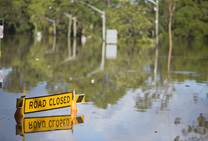NBN Co will undertake a formal assessment of low earth orbit (LEO) satellite-based internet services to understand how it might be able to make use of them in future.
The company has released a closed request for information (RFI) to “understand their offerings” and said an assessment of the response would take “several months”.
“[We are] seeking to understand directly from the LEO operators what might be possible considering the scale of the NBN satellite footprint and user base and whether a number of unique NBN obligations can be met in order to supply services, including price certainty, network and data sovereignty and options for local support,” NBN Co said in a statement.
“We believe that low earth orbit satellite technology could be a part of our network in the future, so we are engaging with those that may be able to offer this as a service in order to find out whether it is feasible,” executive general manager for fixed wireless and satellite Jason Ashton said.
NBN Co has been contemplating a role for LEO-based services for several years.
Portions of NBN Co’s satellite footprint are presently in line for a change of access technology, with 120,000 to become eligible for fixed wireless, and 20,000 for fibre.
NBN Co still expects to have around 300,000 premises in its satellite footprint by the end of 2024.
The proportion of those premises with active satellite services is much lower, however; the latest ACCC numbers say NBN Co had 96,363 services in operation (SIO) at the end of March, down from 102,250 three months earlier.
There’s been a steady decline in Sky Muster subscribers over the past year, as LEO services such as Starlink have expanded in coverage and availability, though NBN Co has previously labelled the churn to Starlink as “modest”.
NBN Co said today that Sky Muster “remains a critical part of the network” and that the service would be enhanced, partly because the reduced number of reliant users meant there is more capacity available.



























